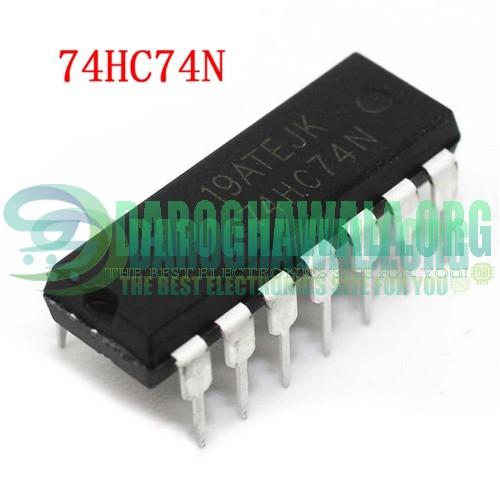- Raspberry Pi & Accessories
- Raspberry Pi Kits
- Raspberry Pi Board
- Raspberry Pi Case
- Raspberry Pi Came
- Raspberry Pi Accessories
74126 IC Quad Bus Buffer Tri-State in Pakistan
74126 IC Quad Bus Buffer Tri-State in Pakistan
74126 IC Quad Bus Buffer Tri-State in Pakistan
Features 74126 IC Quad Bus Buffer Tri-State in Pakistan:
- Quad Bus Buffers with 3-State Outputs
- Separate Control for each Channel
- High-Impedance Output State
- Standard TTL Switching Voltages
Packing list:
- 1x 74126 IC Quad Bus Buffer Tri-State
Related products
- 74LS And 74HC Series IC
74LS76 DUAL JK FLIP-FLOP IC in Pakistan
0 out of 5(0)74LS76 comes with dual JK flip-flops. JK flip flops are widely used in daily electronics devices by many methods but the basic operation of the JK flip flop is to store a bit. JK flip flop allows it to store a bit and then allows it to use for further functions. in digital electronics circuits. JK flip flop is one of the popular flip flops due to its clock input, pre-set, and clear functionalities. The JK flip-flop changes its state under the clock pulse signal. The clock signal can be either a positive edge or a negative edge. The clock pulse gives multiple advantages to the flip-flop. 74LS76 also has provided a feature to neglect or prevent invalid outputs.
SKU: D2025 - 74LS And 74HC Series IC
74HC165 Parallel To Serial 8 Bit Shift Register IC in Pakistan
0 out of 5(0)The 74HC165 is a high-speed Si-gate CMOS device and is pin-compatible with low-power Schottky TTL (LSTTL). They are specified in compliance with JEDEC standard no. 7A. The 74HC165 are 8-bit parallel-load or serial-in shift registers with complementary serial outputs (Q7 and Q7) available from the last stage. When the parallel load (PL) input is LOW, parallel data from the D0 to D7 inputs are loaded into the register asynchronously. When PL is HIGH, data enters the register serially at the Ds input and shifts one place to the right (Q0 –> Q1 –> Q2, etc.) with each positive-going clock transition. This feature allows parallel-to-serial converter expansion by tying the Q7 output to the DS input of the succeeding stage. The clock input is a gated-OR structure that allows one input to be used as an active LOW clock enable (CE) input. The pin assignment for the CP and CE inputs is arbitrary and can be reversed for layout convenience. The LOW-to-HIGH transition of input CE should only take place while CP is HIGH for predictable operation. Either the CP or the CE should be HIGH before the LOW-to-HIGH transition of PL to prevent shifting the data when PL is activated.
SKU: D2016 - 74LS And 74HC Series IC
IC 74LS85 4 Bit Magnitude Comparator DIP 16 in Pakistan
0 out of 5(0)74HC85 4-Bit Comparator IC (7485 IC) DIP-16 Package. 74LS85 is the four-bit magnitude comparators that perform a comparison of straight binary and straight BCD (8-4-2-1) codes. Three fully decoded decisions about two 4-bit words (A, B) are made and are externally available at three outputs. These devices are fully expandable to any number of bits without external gates.
SKU: D2017







Reviews
There are no reviews yet